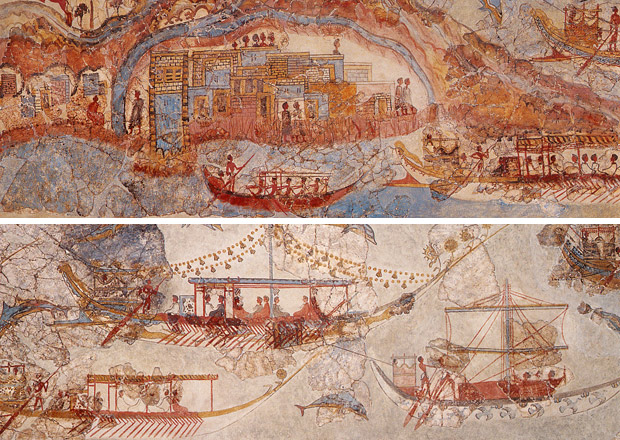The Bronze Age findings in Therasia and Thera

Wall paintings found in Akrotiri, Thera
Therasia island was rich in pumice and this led to the creation of mines. Thanks to the pumice, people could get provided with a building material that was necessary for constructing houses as it turned to a very hard material once having been congealed. The pumice was also known as Theran earth and it was used for the construction of Suez Canal as well as for constructing ports in the Mediterranean area. Pumice mines were also found in Oia and near Athinios port however there are not in function any more.
One of these pumice mines, brought to light an ancient wall to the east of Therasia island, in 1860. Some years later, that area was excavated and revealed an ancient building as well as pottery and various tools. The ruins of a pre-historic settlement buried by the pumice, were found in Thera, in Akrotiri area during excavations carried out by the archaeologist Fouqué. He has described his experience in a great text where we can read that the first finding the excavators found out was a wall painting that dates back to the Bronze Age and consists of red, black, yellow, brown and blue colors.
Posterior excavators came across with a small house and another one to the north, just at the edge of the caldera where they found out some vessels with remains of barley, lentil and chickpeas.
Based on their findings, the archaeologists concluded that the ancient residents of those houses had grown painting skills and were aware of medal processing methods, such as bronze and lead. What is more, there was evidence of trading activities with neighboring countries including North Africa.
